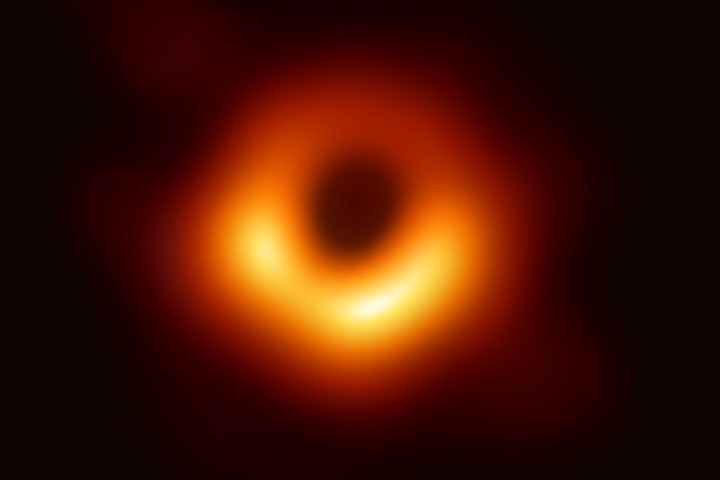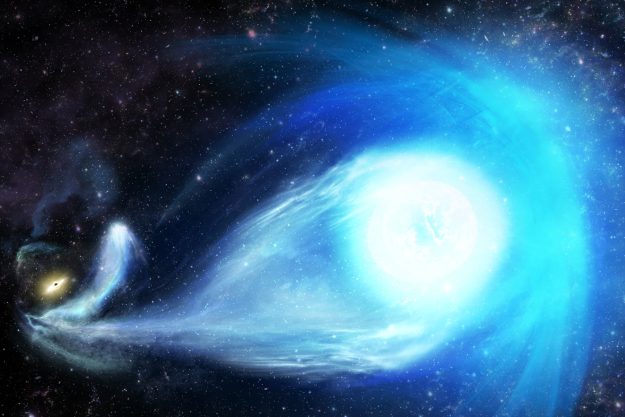
Last April, a coalition of hundreds of scientists from around the world came together to achieve something that had previously been considered impossible: Producing the first-ever image of a black hole, as part of the Event Horizon Telescope (EHT) project.
Jonathan Weintroub is an electrical engineer and scientist who played a lead role in the design of the digital instrumentation for the entire array, and who has been involved with the EHT since its earliest stages. Digital Trends spoke with him about the challenges of bringing together so many people, institutions, and telescopes with one shared aim.

Retrofitting telescopes for a new function
The project required the use of eight different telescopes in six different locations. These telescopes weren’t custom-made for this task though – Weintroub and his colleagues took existing telescopes and fitted them with new equipment to make them part of a global array.
Most of the telescopes were single parabolic dishes, such as the South Pole Telescope in Antarctica or the IRAM 30-meter telescope in Spain, “so they look like your satellite dish for your television, but bigger,” Weintroub explained. The team fitted two pieces of equipment to each dish: First, there was a digital backend consisting of an analog to digital converter and a Linux computer with 256 terabytes of storage per recorder. Four of these recorders per site held a total of 1.2 petabytes of data.

Second, there was an atomic clock, as precise timestamps are essential for getting accurate readings across the array. “It’s the size of a dorm refrigerator, and it keeps time to within about a second every ten million years,” Weintroub said.
Some of the telescopes involved were arrays consisting of multiple dishes, such as the Submillimeter Array in Hawaii or the Atacama Large Millimeter/Submillimeter Array in Chile. For the EHT project, these arrays need to act as a single station. This involved an extra processing step, as Weintroub explained: “Instead of doing the standard processing that we do on the signals, we build a special instrument that sums the output from each telescope in the array and presents just one signal for digitizing.”
A coincidence of good weather
Once the data has been collected at each telescope site, it was sent to a central location for processing, either in Massachusetts or in Bonn, Germany. But “1.2 petabytes at each station is far too much data to send over the internet,” Weintroub said. “So we physically pack these disks into a box and we ship them to a central location.”
The disks from the telescope at the South Pole proved a challenge, however. “Neither FedEx or UPS serves the South Pole, and when we do the observation in April there’s no air service. By late February they shut down the airplanes and there’s just a skeleton staff there, who pack the disks. We wait six months before an airplane arrives and takes the drives. We ended up waiting six months for the South Pole data.”

Another practical issue was the weather at each site. High-frequency radio telescopes, like the ones used in the EHT project, are extremely sensitive to water in the atmosphere and require clear skies to operate effectively. Hence why most of the telescopes are located in high altitude locations with very dry atmospheres, such as the Atacama Desert in Chile or Mauna Kea in Hawaii. Even so, the observation requires good weather at every single site. “If you want it to work, you need to have a coincidence of good weather at all the sites. That happens rather infrequently, as it turns out.”
The weather conditions don’t only affect the science, but the scientists too. The extreme altitude and low humidity bring their own challenges for people working at the sites. “There’s very low water vapor at the top of the mountain. It’s like a desert. Your skin cracks, you need to put protection on your lips.” And when it comes to altitude, “We are up at altitudes of up to 6,000 meters. The atmospheric pressure is about 60% of that at sea level. You get altitude sickness and you get headaches.” To adjust to the conditions, the scientists acclimate by spending a few days at increasingly high altitudes.
Corralling people and organizations
EHT was only one of many projects competing for time on the various telescopes. Telescopes are over-subscribed, meaning that more projects apply to use them than can be allotted, so it can be competitive to get time on the instruments. Trying to corral governments, organizations, and scientists to allow the EHT time on the various telescopes was a “matter of arm twisting,” especially before EHT’s landmark result made headlines in 2019.
And there’s the issue of coordinating a huge number of people live in different countries. The practicalities of having researchers living in time zones from East Asia to Hawaii means it is almost impossible to find a time to meet for teleconferences. Weintroub ended up organizing two versions of each global meeting, just so that everyone could attend one without having to get up in the middle of the night.
Personal challenges
There’s also the oft-overlooked inter-personal aspect of collaborative scientific work. “The bringing together of all these telescopes has been presented as a model for the rest of the world of collaboration, but it did involve complicated negotiations,” Weintroub said. “There’s certainly a challenge when the collaboration grows from a group of 12 researchers to a group of over 250. Within the collaboration, there’s a certain amount of natural competition and rivalry. It can be a little bit of a personal challenge.”
In scientific circles, the relative contributions of authors to published papers is reflected in the order in which their names are listed. But trying to determine the individual contributions of each researcher to such a huge project was essentially impossible. Some team members had been working on the project for a decade, while others only joined in the last few years. And there is tremendous pressure on researchers, especially those early in their career, to have their name prominently featured in important publications.
“There was a lot of debate around authorship,” Weintroub said. In the end, in the papers resulting from the EHT project, “the authorship is purely alphabetical. After being part of the debate, this was the only way it could have been done.”
A remarkable result
All this work and coordination achieved a truly remarkable result of the first-ever image of a black hole, located in the galaxy Messier 87. And the EHT project will continue, with even more telescopes joining the project to image more black holes with even greater sensitivity in the future.
Editors' Recommendations
- They shot the world’s first black hole photo. Now they’re shooting a video
- Astronomers want your help to identify thousands of black holes
- Astronomers search tiny galaxies to understand the evolution of black holes
- Planets could form around supermassive black holes, new study shows
- Astronomers discover an ‘impossible’ black hole in our galaxy




